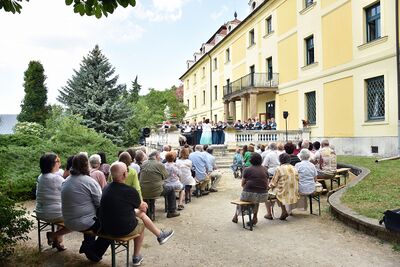LED Workshop Törökbalint 2018
Introduction and workshop context
The LED workshop in Törölbálint, Hungary, will take place from June 24 - July 3, 2018. Participants of the LED online course will get an opportunity to work with a real community and their landscape, applying the seminar's methods and approaches in practice. The workshop is hosted by Szent István University in Budapest, Hungary. The participants will spend most of their time in the community of Törökbálint. This little town is situated 15 km to the southwest of Hungary's capital city Budapest and has become part of the metropolitan area.
Workshop documentation
Location of Törökbálint in the surroundings of Budapest
Urban and regional context of Törökbálint
Törökbálint is situated in the metropolitan area of Budapest, Hungary. This spatial situation not only determines the suburban character of the community but also the socio-cultural challenges its faces. The tension around urban development is extremely high since the city has been experiencing intense growth. The population is predicted to reach an estimated 20.000 people by 2030, and new and old residents have different expectations for the future of the city, and demands for participation in the development processes. Although there are documents that regulate the relation of the civil society and local government, conflict has emerged that derives from different understandings of what a partnership entails. The lack of participatory tradition in the Hungarian urban planning context is a challenge and an opportunity at the same time that enables to establish tailor-made participatory solutions and methods.
Landscape challenges in Budapest
- Intensive growth: The tension around urban development is extremely high since the city has been experiencing intense growth. The population is predicted to reach an estimated 20.000 people by 2030, and new and old residents have different expectations for the future of the city (e.g.in scale, aesthetic of urban solutions), and demands for participation in the development processes (face to face, digital, etc.). How can we develop and renew our city and still keep the tradition and atmosphere of the city? What are the characteristics of public spaces that could bond the growing population?
- Fragmented identities: ‘Dormitory town’ is a terms often used to indicate this type of metropolitan settlements. Many experience the commuting lifestyle, and people travel to work or study, spend the free time in the capital on daily bases. Living on the geographical and mental border between city and country raises many question: Do we belong to the capital or to our own city? Can we break this prejudice and celebrate the diversity and the local values of the community? Can we create stories that bind all these people together?
- Youth moving out: the suburban town provides safe and healthy environment for families with small children. But after they grow up they move to the Capital. The Youth Council intends to participate more intensely in the life of the city and and works on increasing their influence on decision-making. While there is this positive tendency, the municipality is unprepared to engage and empower youth in wider sense. What can we do to keep youth in the city? Should we provide them sufficient services and housing? How can we foster youth to participate in the urban dialogue?
- Dysfunctioning participation: Although there are documents that regulate the relation of the civil society and local government, the conflict has emerged that derives from different understandings of what a partnership entails. The lack of participatory tradition in the Hungarian urban planning context is a challenge and an opportunity at the same time that enables to establish tailor-made participatory solutions and methods. Can we create such tools and processes that improve participation culture and allows the variety of people to be heard? What ideas could bridge citizens and the municipality?
Workshop activities and topics
The participants will meet and engage with the local community. They will collect material from written and oral resource related to the above mentioned challenges. We will storytelling and participatory techniques (e.g, city walk, storytelling events, applications, exhibitions). By the end of the workshop everyone will hopefully be a better storyteller. We will come up with new landscape narratives for the town of Törökbálint.
Resources
Maps and urban development
- ITS / Intergated Urban Development Plan (HU)
- TK / Urban Development Concept (HU)
- Online Map service of the city with interactive function for citizens fo sending environmental information (HU), ---> Application
- Micro-regional collaboration portal (HU, EN)
- Urban Image Booklet (HU)
History and culture
- History of Törökbálint: online catalogue available in three languages (DE, HU, EN)
- MIXDOOR art festival
- Törökbálint Ma news portal and application(HU)
- More pictures of the town at Flickr by Veszely István
- and more pictures
Videos
{{#evu:https://www.youtube.com/watch?time_continue=4262&v=k3_rqpEaBVY |alignment=left |dimensions=500 |description= Video about the Swabian culture in Törökbálint }}
{{#evu:https://www.youtube.com/watch?v=J4tdRCgkpQ4 |alignment=left |dimensions=500 |description= Video ‘Recolor your creek’ - e-click competition material about the Hosszúréti-creek, Törökbálint and the metropolitan area (EN), more about this project is available on the blog (HU) }}





